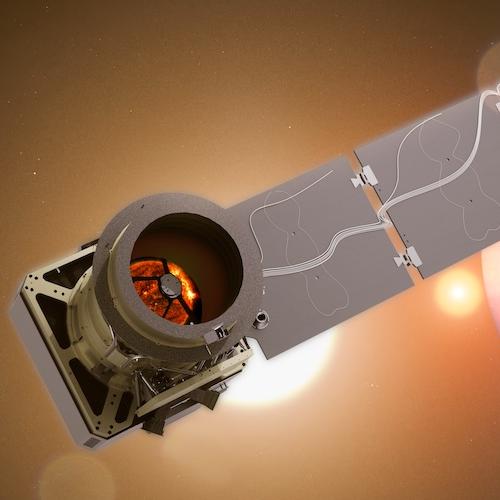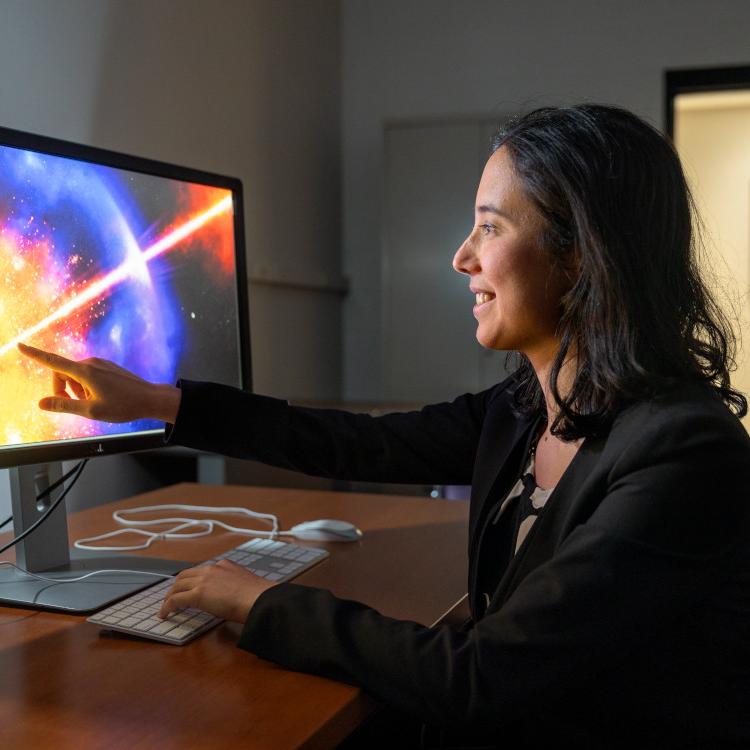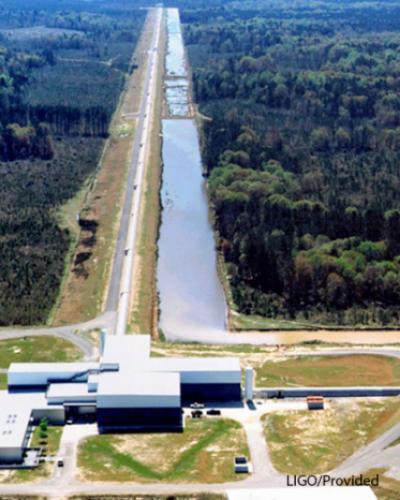Even the most extreme objects in the universe – including black holes – must obey certain rules.
A central law for black holes predicts that the total area of their event horizons – the boundary beyond which nothing can ever escape – should never shrink. This law is Hawking’s area theorem, named after physicist Stephen Hawking, who derived the theorem in 1971.
Fifty years later, physicists at Cornell, MIT and elsewhere have confirmed Hawking’s area theorem for the first time, using observations of gravitational waves. Their results appeared in Physical Review Letters on July 1.
In the study, the researchers took a closer look at GW150914, the first gravitational wave signal detected in 2015 by the Laser Interferometer Gravitational-wave Observatory (LIGO) and confirmed using a theoretical model developed at Cornell. The signal was a product of two in-spiraling black holes that merged to produce a new black hole, along with a huge amount of energy that rippled across space-time as gravitational waves.
“The idea that you could actually test Hawking’s area theorem seems crazy,” said Saul Teukolsky, the Hans A. Bethe Professor of Physics in the College of Arts and Sciences (A&S) and a co-author of the paper.
“You have to go out somewhere and find some black holes, measure their areas and add them up, then come back later when they’ve merged and measure the area of the final black hole,” Teukolsky said. “Luckily, this is something we can do by analyzing the gravitational waves the system emits.”
If Hawking’s area theorem holds, then the horizon area of the new black hole should not be smaller than the total horizon area of its parent black holes. In the new study, the physicists reanalyzed the signal from GW150914 before and after the cosmic collision and found that, indeed, the total event horizon area did not decrease after the merger – a result that they report with 95% confidence.
Their findings mark the first direct observational confirmation of Hawking’s area theorem, which has been proven mathematically but never observed in nature until now. The team plans to test future gravitational-wave signals to see if they might further confirm Hawking’s theorem or be a sign of new, law-bending physics.
In 2019, Matthew Geisler, research associate at the Cornell Center for Astrophysics and Planetary Science (A&S), and the new paper’s other co-authors developed a technique to extract the reverberations immediately following GW150914’s peak – the moment when the two parent black holes collided to form a new black hole. The team used the technique to pick out specific frequencies, or tones of the otherwise noisy aftermath, that they could use to calculate the final black hole’s mass and spin.
They then developed a model to analyze the signal before the peak, corresponding to the two in-spiraling black holes, and to identify the mass and spin of both black holes before they merged. From these estimates, they calculated their total horizon areas, which was roughly 235,000 square kilometers, or roughly twice the area of New York state.
They used their previous technique to extract the “ringdown” – reverberations of the newly formed black hole – from which they calculated its mass and spin, and ultimately its horizon area. That was found to be equivalent to 367,000 square kilometers, or approximately three times the area of New York.
“It’s exciting that the novel methods we developed to reanalyze the first merger have now allowed us to finally put Hawking’s proposition to the test,” Giesler said. “The area theorem is really a statement about Einstein’s theory of relativity, so we’re putting Einstein to the test here. As detectors improve, we’ll continue to probe the gravitational waves from black holes with exceptional precision, constantly looking for the point where Einstein’s theory might finally break down.”
Other co-authors on the paper are lead author Maximiliano Isi, a NASA Einstein Postdoctoral Fellow at MIT; Will Farr of Stony Brook University and the Flatiron Institute’s Center for Computational Astrophysics; and Mark Scheel of the California Institute of Technology.
The research was supported by NASA, the Simons Foundation and the National Science Foundation.






